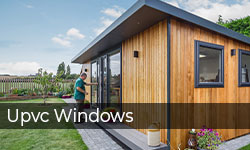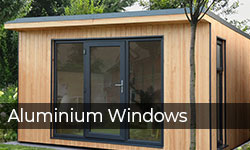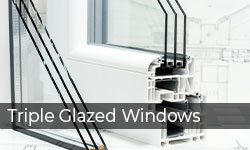
Aluminium Windows
Aluminium Windows
If you want the ultimate modern performance and aesthetics, aluminium should be your window material of choice. Thin-framed aluminium windows look particularly stunning in modern homes, but with a range of wood effect finishes optional in the design process, they can also blend with traditional properties. The slimline frames allow more light to enter your home as well as giving you wide-ranging views of your garden. With superior sturdiness and durable frames, its one of the strongest materials on the market. It’s advanced manufacturing also makes it extremely thermally insulating, able to achieve A+ energy ratings. For a premium window material that can last over 45 years, aluminium is an ideal solution.
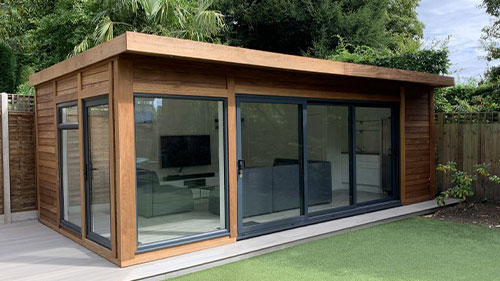
What are aluminium windows?
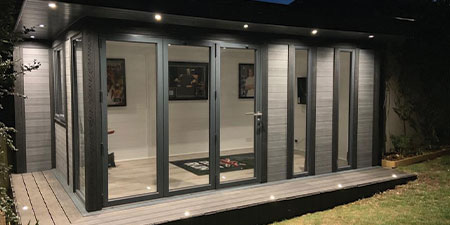
Aluminium frames undergo rigorous extrusion mechanisms, with the profiles being welded together to a specific shape. During this process, they are fabricated to minimise the heat transfer of cold elements with thermal break technology. That’s why aluminium windows offer unparalleled security and durability. The innate strength allows for large panes of glass to be held and with the edge of the aluminium frame being as close as 50mm to the glass, you can take advantage of more views.
Aluminium window performance overview:
- Minimalist frames and sightlines
- High thermal performance: 0.9 U-Value
- A++ energy rating
- Available in new and classic styles
- Lightweight with a high strength-to-weight ratio
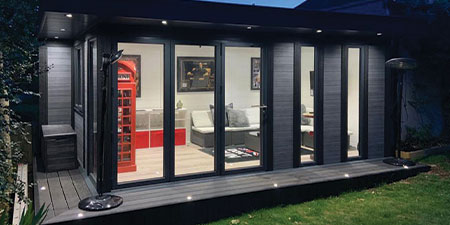
The benefits of aluminium windows
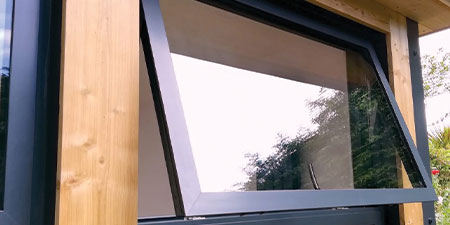
The most recent window material option but by no means the newcomer, aluminium windows have built a reputation for being the ideal choice in commercial and large-scale projects. With its unmistakably sleek, stylish aesthetics, aluminium’s popularity has soared in recent years. This is thanks, in part, to TV shows like Grand Designs, where it’s frequently used in striking and ambitious contemporary self-build projects. Aluminium is also one of the most aesthetically versatile materials on the market, available in any RAL colour. Slim sightlines don’t just add to the striking, contemporary feel. They also offer unparalleled levels of natural light, able to brighten any room in the home and lend the whole property an airy, spacious atmosphere.
Not only unrivalled when it comes to strength, but modern aluminium windows also offer excellent thermal efficiency. This is thanks to their innovative polyamide thermal break – a plastic barrier placed between the inner and outer aluminium frame to prevent heat escaping. Add in high-quality glass and a premium multipoint locking system, and aluminium products can deliver truly outstanding security, energy efficiency and all-round performance. They incorporate Aerogel for impressive thermal performance, delivering U-Values as low as 0.9.
Aluminium window products almost always sit at the most expensive end of the scale – but in return, you get arguably the best all-round performance, including excellent security, durability and functionality. Available in a range of styles including casement, tilt and turn and as bay windows, there’s an aluminium solution to suit any home improvement vision.
uPVC Window Benefits
Aluminium Window Benefits
Low maintenance
Low maintenance
Cheapest choice
Slimline frames
Thermally efficient
Superior thermal performances
Durable and robust
Strongest construction material
Versatile designs
Long lifespan
Aluminium or UPVC Windows, Which is Best?
Both are excellent! Aluminium windows always cost a little bit more than UPVC, but window prices aside there is little difference in terms of their performance. Some people think that the aesthetics of aluminium are better but UPVC or aluminium windows are both top materials for new or replacement windows.
We specialise in guiding our clients to the perfect window frame choice for their needs, so you can be certain we will find the right materials for your project in the south coast region of the UK.
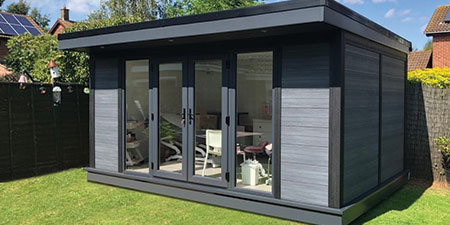
Styles Of Garden Room Windows
Casement windows
Chances are you have casement windows in your house; they are side hinged openers set in a framework with a sill.
Like in your house casement windows are a good option for a garden office. They come in different sizes and styles – plain, with bars etc., and offer a real benefit in that you can easily open them to ventilate the room.
Casement windows also work well in a garden office because they can be positioned over the desk area, giving you a view to gaze out at as you work! The fact that furniture can easily be positioned below and around casement windows maximise the working space. Which can be a problem when choosing floor to ceiling glazing options.
Casement windows are typically found on the more traditional garden office styles, with contemporary garden office designers favouring larger expanses of glass.
Floor to ceiling windows
Floor to ceiling glazing has become a significant trend in garden office design. We can understand why, because it enables a connection of the inside space with the garden. Its this connection with the outdoors which appeals to many garden office owners.
Floor to ceiling windows come in all shapes and sizes and are used in different positions by different suppliers. The common trend is to create whole walls of glazing by mixing large fixed floor to ceiling windows with a set of doors.
Because floor to ceiling glass is usually fitted in one piece, so there are no bars breaking up the visual line. They are normally fixed, i.e. non-opening windows, and this can pose an issue with getting air into the room. There are some days when you just want a window ajar for a little air, but your only option would be to open the door which could be too much!
Garden office designers get around this issue by either designing opening sections in their glazed walls, although they are not keen on this because the framework for an opening window breaks the clean visual line. Or, they include smaller opening windows elsewhere in the building or even opening roof windows.
Wrap around windows
Wrap around glazing is a favourite feature in garden office design, as it creates a real connection of inside-outside space and floods the room with natural light.
Depending on the design of the building the glazing can wrap around two elevations or even three. When the glazing wraps around the building like this the structure of the roof appears to float on the glazing – rest assured a lot of engineering goes into ensuring that the weight of the building isn’t going through the glass!
Wrap around glazing takes two forms; the most common is floor to ceiling fixed glass panels which are mixed in with door systems to create glazed walls. The other option is desk height wrap-around glazing.
Desk height wrap-around glazing is a clever option as it maximises the internal space for office furniture, e.g. desks, shelving etc., but also maximises the glazing in the area you are working. Creating a cockpit-like setup. Which makes you feel, as you are sitting at your desk, that you are part of the garden.
Desk height wrap-around glazing tends to be a combination of fixed glazed panels and top hung (awning) windows which allow you to control the ventilation in the room.
Narrow rectangular windows
Narrow rectangular windows are also known as lozenge or letterbox windows. We are seeing them used in garden office design more and more. Rectangular windows tend to be used with other styles of glazing such as floor to ceiling windows and are useful as high-level glazing or desk height glazing.
Although some rectangular windows are fixed, i.e. they don’t open. Most examples we have seen are top hung awning windows. This is very useful, particularly when combined with large expanses of fixed glazing as they are easy to open allowing you to control the air flow in the building.
Cathedral windows
Pitched roof garden office designs open up the possibility of including high-level glazing in your design. High-level glazing floods your room with natural light.
With dual pitched garden offices the gable ends can be glazed to great effect. By combining long windows with glazing in the gable end, a cathedral style window can be created.
Porthole windows
A couple of traditional style garden office suppliers offer the option of round windows, often called portholes they resemble the windows on a boat. These round windows can be positioned at standard window height, but are more often positioned in the gable end of the building creating high-level glazing.
Porthole windows come in both fixed, non-opening options and opening windows which are a good ventilation source.
Cathedral windows
Pitched roof garden office designs open up the possibility of including high-level glazing in your design. High-level glazing floods your room with natural light.
With dual pitched garden offices the gable ends can be glazed to great effect. By combining long windows with glazing in the gable end, a cathedral style window can be created.
Roof windows
You’re not limited to just placing windows in the walls of your garden office; the roof can provide a source of good light and an extra ventilation point.
There are lots of different styles of roof window used in garden office design, the most common is the opening roof window like those you’ll find used in loft conversions. This type of window used in a pitched roof design can flood the room with natural light, and they are easy to open. Extras such as remote controls, rain sensors to close the windows and blinds can be easily ordered.
On flat roof garden offices roof lanterns are often used, they can be dome-shaped or four-sided pyramid units. Some designs have opening vents; others are fixed units.






